
Get Ready For Your Next Dental Emergency
Everything you need to know about dental emergencies
Dental emergencies are eventualities that can interfere with a person’s day in many ways. Most of the times, they manifest as sharp and acute pain. However, many other conditions are regarded and treated as dental emergencies, and it is vital to know when to seek immediate attention from a dentist near you.
Therefore, a toothache due to a cavity or an abscess is not the only type of dental emergency. Trauma, accidents, or even issues with your dental crown can lead to a quick visit to an emergency dentist. Thus, a dental emergency can occur even if you have optimal oral health.
It is essential to be prepared and know what to do in any possible emergency scenario. Fortunately, having the basic knowledge not only helps you manage the situation better but also helps you achieve a better outcome in most cases.
At Smile Dental Clinic, we focus on your comfort while looking forward to provide a quick and effective solution to your dental emergencies. If you have a dental emergency, visit our dentist’s office in Seattle, and we’ll ease your pain in no time.
In this article, we’ll talk about dental emergencies and how your dentist can help you.
What is a dental emergency?
A dental emergency is any situation related to your teeth and mouth that requires immediate or prompt dental treatment for multiple reasons. These conditions are often associated with severe pain that won’t subdue easily, even with painkillers. This pain can usually be unbearable and prevent the patients from carrying on their usual daily activities. Therefore, addressing them as soon as possible is vital to ensure that the patient can return to his normal life promptly.
Additionally, it is essential to know that dental emergency treatments mostly aim to provide a quick solution, solve the emergency, or relieve the pain. For this reason, patients usually need to go back to the dentist with a regular appointment to undergo definitive treatment.
It is essential to discern the difference between a dental emergency and a traditional dental problem. While a chipped tooth or dislodged filling can be troublesome, this will probably not have any immediate complications while patients wait for a regular dentist appointment. Therefore, these types of issues are not considered a true dental emergencies.
How to identify a true dental emergency?
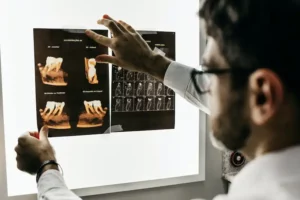
The easiest way to identify a dental emergency is by paying attention to the symptoms. Usually, oral problems that require immediate treatment are accompanied by some of the following symptoms:
- Severe pain that forces the patient to take painkillers
- Inflammation
- Profuse bleeding
- Systemic symptoms such as fever
If you experience any of these symptoms, it is highly recommended that you visit an emergency dentist as soon as possible. On the other end, your dentist counts on other methods to identify the affected tooth and its cause, such as:
- X-Ray
- Through oral cavity examination
- Dental history (any previous treatment this tooth had)
- Medical history
Types of dental emergencies
There are several types of dental emergencies. The most common ones in the list include:
1. Severe toothache
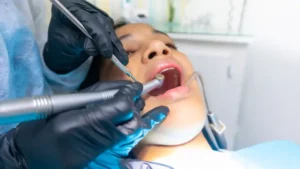
Severe pain is the most frequent symptom most patients manifest when attending an emergency appointment.
It is usually associated with deep and extensive cavities. Furthermore, the pain can spread from the affected tooth to other areas, even reaching the ear.
Pain from dental cavities usually begins as a mild discomfort to certain stimuli, such as eating or drinking something hot/cold or sweet. However, when the lesion has progressed for a long time, it reaches the dental pulp (the nerve) and triggers a more painful reaction.
This second type of pain is often unbearable and spontaneous, meaning that it just suddenly appears without any external stimuli. Once the disease has reached this point, it can be considered an emergency due to the pain it is causing and the infection risk.
It is normal for patients in this condition to experience pain worsening while they are laying down on the bed at night. This happens due to the increased blood flow to the head. As a result, the blood pressure in the area also increases. Although this pressure difference might be unnoticeable, it is enough to make the pain worse.
Taking painkillers can momentarily ease the pain. However, it won’t disappear until you visit your dentist and complete the recommended treatment. In some cases, the pain can be so severe that regular painkillers won’t provide any relief.
2. Trauma and extensive tooth fracture
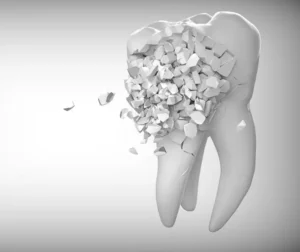
While emergencies caused by cavities can occur mostly due to oral hygiene issues, emergencies due to trauma are completely accidental and unpredictable.
Severe trauma or an impact against a tooth can fracture its enamel and dentin. If the fracture is small and results in just a chipped tooth, then it is completely safe to wait for a regular appointment. However, extensive fractures must be treated as a dental emergency.
These fractures can occur near the dental pulp (nerve). Nonetheless, on some occasions, the fracture even leaves the pulp exposed to the mouth. These fractures can be accompanied by severe pain and bleeding.
It is also possible for severe trauma to affect the blood vessels in the pulp without fracturing the tooth. This causes severe pain and infection and should also be treated as soon as possible.
Lastly, trauma can also be heavy enough to fracture the jaw and the maxillary bone. However, these emergencies should be treated in a hospital setting.
3. Dental avulsion and intrusion
Dental trauma can do more than just fracturing the tooth. It can also make the tooth separate from the gum and bone to cause it to come out, also known as dental avulsion. Another possibility is for the trauma to push the tooth inward the bone – also called dental intrusion.
As to be expected, these cases must be treated immediately. Particularly when an avulsion occurs. After an avulsion, it is possible to re-implant the tooth back into its socket. However, its success rate is determined by the time that passes between the accident and the re-implantation and the way the tooth was preserved.
4. Face swelling
Dental infections and abscesses can cause severe symptoms, such as extraoral swelling and fever. This is a serios condition that must be treated promptly, as it can turn into another type of issue.
Since the mouth possesses thousands of blood vessels, the bacteria from the infection can proliferate and migrate through them to other organs.
The dentists will address the source of infection directly by completing the necessary treatment and sometime will need to prescribe antibiotics as well. This way, it is possible to decrease the infection and control the symptoms.
Emergency treatments available
The dentist relies on a series of treatment options available to address every individual case. However, which one is used is determined by the clinical case along with the patient’ decision being considered.
Root Canal Treatment
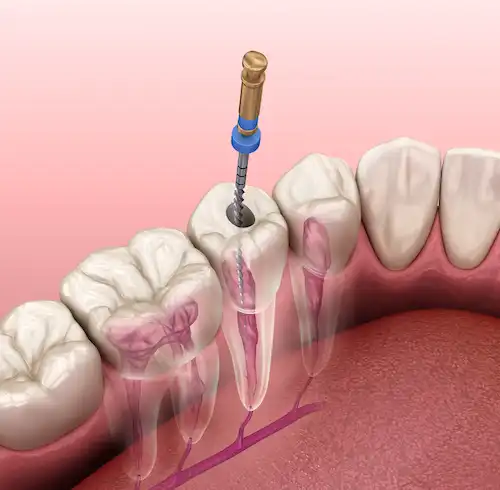
One of the most common dental emergency treatments is a procedure called root canal treatment, also known as endodontic therapy. This treatment is used in cases of extensive cavities that have already reached the pulp and infected it irreversibly.
A root canal treatment procedure consists of the dental pulp removal from the inside of the tooth’s root/s along with the removal of all bacteria. Since the dental pulp is the part of the tooth responsible for its sensitivity, removing it offers immediate relief.
To perform a root canal procedure, the dentist takes an x-ray of the tooth, conducts a clinical evaluation, and sets a final diagnosis. All available treatment options along will the risks, benefits and alternatives are discussed before proceeding with any treatment. The treatment for a root canal is done entirely under local anesthesia to ensure your comfort and prevent painful reactions.
Sometime, to control any anxiety and fear – the dentist may recommend sedative agents to be used as well. After the cavity is fully removed the pulp space (root canal) is accessed. The dentist then removes the pulp with specialized tools and the root canal is properly shaped and cleaned. In the end the root canal space is disinfected and a dental material is placed to seal the space. A filling is placed on top to restore the missing tooth structure.
After the root canal treatment a crown must be placed as well on top for the back teeth; for the front teeth a dental crown is not always mandatory, only when a considerable part of the tooth structure is missing. This is the only way to preserve the tooth and prevent other complications, such as re-infections and fractures.
Bonding restorations
The dentist can perform a bonding restoration (or filling) in case of a fracture or chip.
These restorations are made with composite resin to match the tooth color. However, the dentist may do a few tests to check the vitality of the pulp. Your dentist may need to perform a root canal treatment if the pulp was severely damaged in the accident.
If you can find the broken piece of the fractured tooth, make sure to bring it to the dentist’s office. The reason is that it might be possible to bond back the broken piece instead of restoring the entire segment with composite.
Tooth extraction
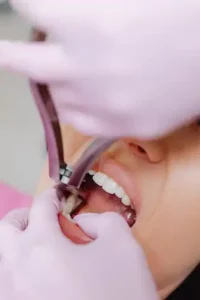
In some cases, the damage caused by the cavity or the fracture is so extensive that the tooth can’t be restored. When this happens, the only option available is to perform a tooth extraction.
To do so, the dentist takes an x-ray of the tooth and proceeds to carefully extract it using dental forceps, elevators and other surgical instruments. This procedure is done under local anesthesia.
Sometimes, the infection spreads beyond the roots of the tooth in the tissue. When this occurs, the dentist removes the infected tissue from the tooth socket as well. This allows for a fast recovery and healing.
At home care
Unfortunately, dental emergencies tend to happen at the most inconvenient moments. Moreover, they can happen late at night or during vacations when you can’t reach your dentist. For this reason, it is vital to know how to manage the situation until you can visit an emergency dentist. There are different ways to manage it depending on the case.
Taking painkillers, such as ibuprofen, can help ease the toothache temporarily until visiting the dentist. Nonetheless, the pain can be severe enough to resist the medication.
In case of trauma, it is essential to remain calm and assess the situation. If there is bleeding, you should clean the area with a clean piece of cloth or sterile gauze. This can help you identify if the bleeding is coming from the tooth or the soft tissues in the mouth, such as the gums or lips.
Furthermore, inspect the area where the accident happened to look for your avulsed tooth or broken piece. The avulsed tooth must be stored in your saliva (in your cheek pouch) or a container with either Hank’s balanced salt solution or milk. These liquids help prevent the ligament cells from dying so the tooth can be effectively re-implanted.
Lastly, rinsing your mouth with warm salty water can help decrease the swelling.
How to prevent a dental emergency?
Dental emergencies are unexpected and can happen at any given time. However, it is possible to reduce the risk by taking a few preventive measures.
Practice good oral hygiene
Brushing your teeth twice a day can prevent cavities from developing. If there are no cavities, there will be less unexpected toothache.
Wear a mouthguard while playing sports
Dental trauma is entirely spontaneous. However, people practicing heavy contact sports are more susceptible to suffering these accidents. Therefore, it is highly recommended to wear a mouth guard while playing these sports. They act as a cushion that reduces the risk of damaging the teeth upon a heavy hit.
Don’t ignore any symptoms
Most oral health issues begin with mild symptoms that only cause mild discomfort. It is essential to address these situations in their early stages before they evolve into a dental emergency.
The takeaway
Dental emergencies can happen to anyone at any time. Fortunately, the dentist can perform different procedures, such as root canals treatment, fillings and tooth extraction, to ease the pain and restore oral health.
Nonetheless, dental emergency treatments may aim to provide a quick solution and relieve the pain so patients can comfortable wait until the definitive treatment is provided.
Visit our dental clinic in Seattle if you have a dental emergency so our dentists can relieve your pain. You are guaranteed to be smiling again in no time.
References
- American Dental Association . (n.d.). Dental emergency. Mouth Healthy TM. Retrieved July 18, 2022
- Bayetto, K., Cheng, A., & Goss, A. (2020). Dental abscess: A potential cause of death and morbidity. Australian Journal of General Practice, 49(9), 563–567
- Colgate. (2022, March 15). Do you need emergency dental care: Colgate®. Do You Need Emergency Dental Care | Colgate®. Retrieved July 18, 2022
- De Brier, N., O, D., Borra, V., Singletary, E. M., Zideman, D. A., De Buck, E., Bendall, J. C., Berry, D. C., Carlson, J. N., Cassan, P., Chang, W. T., Charlton, N. P., Djärv, T., Douma, M., Epstein, J. L., Hood, N. A., Markenson, D. S., Meyran, D., Orkin, A., … Woodin, J. A. (2020). Storage of an avulsed tooth prior to replantation: A systematic review and meta‐analysis. Dental Traumatology, 453–476
- Higuera, V. (2020, April 24). Temporary filling: Durability, care instructions, procedure. Healthline. Retrieved July 19, 2022
- Nazario, B. (2020, July 31). Toothache home remedies: What works and what hurts. WebMD. Retrieved July 18, 2022